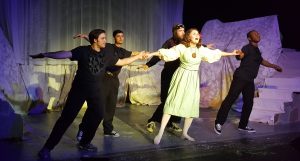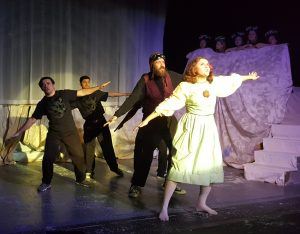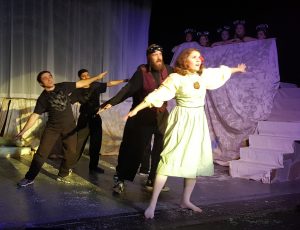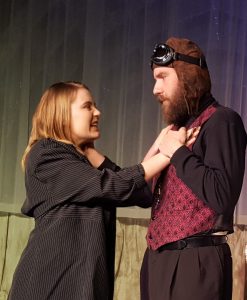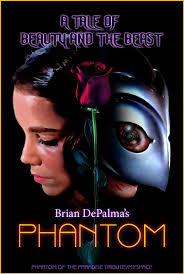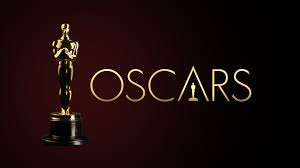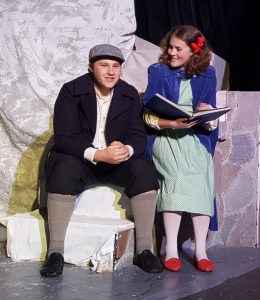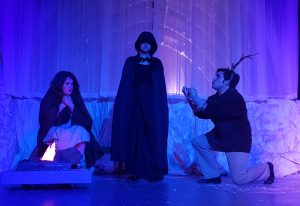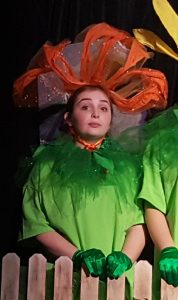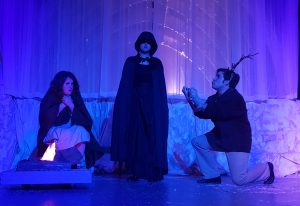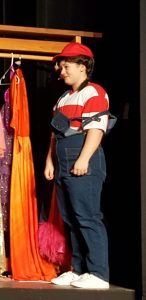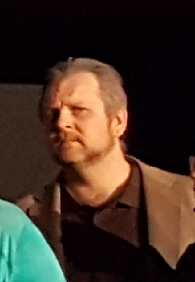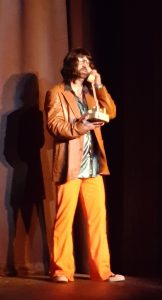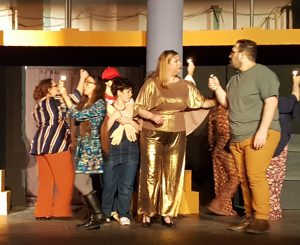Category: Uncategorized
VIDEO VARIATIONS TO VIEW WITH YOUR VALENTINE
AUDIO OPTION FOR MY ARTICLE ON VALENTINE’S DAY 2020 MOVIES: VIDEO VARIATIONS TO VIEW WITH YOUR VALENTINE
SHORT TAKE:
Four delightful “off the beaten track” love stories for adults.
WHO SHOULD WATCH:
More for the adult crowd because of scenes, in the various movies, of: unmarried intimacy, open discussions of alternative lifestyles, drug abuse, cartoon violence, and some profanity.
LONG TAKE:
Despite my friend’s assertion that every movie can be described as a “love story with a twist” there really ARE some love stories…with twists. And I’m going to recommend four of my favorites: a cult sci fi classic, a pinnacle of political incorrectness, a bizarre rock opera, and a more traditional rom com.
Starman (1984)
There are two Jeff Bridges. Most people know him now for his roles as the rough tough cowboy in movies like Hell or High Water, R.I.P.D., and Kingsman: The Golden Circle. 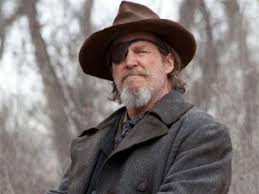 But long before Bridges was old enough to step into John Wayne’s shoes as the eye-patched Rooster Cogburn in the Cohen’s Brothers truly and brilliantly inspirational remake of True Grit, Bridges was more male model than macho with a mustache. One of these gentler outings, in particular, rose above the rest as a sci fi cult favorite – Starman.
But long before Bridges was old enough to step into John Wayne’s shoes as the eye-patched Rooster Cogburn in the Cohen’s Brothers truly and brilliantly inspirational remake of True Grit, Bridges was more male model than macho with a mustache. One of these gentler outings, in particular, rose above the rest as a sci fi cult favorite – Starman.
 Karen Allen (Raiders of the Lost Ark) is Jenny, a young, deeply grieving, widow living alone out in the country. An alien space ship crashes near her home.
Karen Allen (Raiders of the Lost Ark) is Jenny, a young, deeply grieving, widow living alone out in the country. An alien space ship crashes near her home.  The surviving alien force (Bridges) grows a living breathing body from the DNA of her deceased husband, then persuades her to drive him to an unknown destination with SETI hot on their heels.
The surviving alien force (Bridges) grows a living breathing body from the DNA of her deceased husband, then persuades her to drive him to an unknown destination with SETI hot on their heels.  Part sci fi, part buddy movie, part romance, Starman is both darkly witty and schmatzy,
Part sci fi, part buddy movie, part romance, Starman is both darkly witty and schmatzy,  but with enough sci fi to keep the nerd in your relationship engaged in the story.
but with enough sci fi to keep the nerd in your relationship engaged in the story.
A Different Story (1978)
Now here’s a movie to truly infuriate the politically correct. And if that is not enough incentive for you…well it should be. A Different Story IS just that. Unique. You’re not likely, especially in this quick-to-be-offended liberal mentality culture, to find another one like it.
 Meg Foster is Stella, a successful real estate agent who takes in
Meg Foster is Stella, a successful real estate agent who takes in  Albert (Perry King), an acquaintance, when he loses his job. They begin to become fond of each other as Albert becomes her house cleaner and live-in chef. The “different” part is that Albert is gay and Stella a lesbian.
Albert (Perry King), an acquaintance, when he loses his job. They begin to become fond of each other as Albert becomes her house cleaner and live-in chef. The “different” part is that Albert is gay and Stella a lesbian.  But when Albert, who is from Belgium, is threatened with deportation, Stella marries him and they manage to fall in love.
But when Albert, who is from Belgium, is threatened with deportation, Stella marries him and they manage to fall in love.  This is where the real story begins as they learn to tread the waters of a normal marital relationship with all of its acmes of joy and pitfalls of mistakes.
This is where the real story begins as they learn to tread the waters of a normal marital relationship with all of its acmes of joy and pitfalls of mistakes.
Phantom of the Paradise (1974)
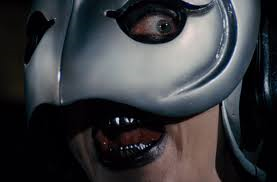 And now for something REALLY different. For those of you under 50 who are probably not aware that a diminutive musician/actor/singer/writer named Paul Williams penned most of the award winning and Top 40 pop tunes of the 1970’s and 1980’s, this is a one-of-a-kind.
And now for something REALLY different. For those of you under 50 who are probably not aware that a diminutive musician/actor/singer/writer named Paul Williams penned most of the award winning and Top 40 pop tunes of the 1970’s and 1980’s, this is a one-of-a-kind.
You’ll either love or hate this comic rock-horror-musical, loosely based on Faust and Phantom of the Opera. As Hail, Caesar! took a broad affectionate jab at many established film genres,  Phantom pokes a sharp stick at many of the cliched musical trends of that day: country, hard Goth rock, pop, folk, Beach Boys ‘50’s retro, and rock opera. And keep in mind Phantom PRE-DATED Rocky Horror Picture Show by a YEAR!
Phantom pokes a sharp stick at many of the cliched musical trends of that day: country, hard Goth rock, pop, folk, Beach Boys ‘50’s retro, and rock opera. And keep in mind Phantom PRE-DATED Rocky Horror Picture Show by a YEAR!
 Phantom is populated with a number of actors who MIGHT be vaguely familiar,
Phantom is populated with a number of actors who MIGHT be vaguely familiar,  INCLUDING the voice of
INCLUDING the voice of  Rod “Twilight Zone” Serling, who does a brief narrative intro over Swan’s company logo.
Rod “Twilight Zone” Serling, who does a brief narrative intro over Swan’s company logo.
 Paul Williams is Swan, a music guru and tycoon, former child music genius and star, who oversees his music empire, Death Records, with “almost” supernatural power, both anticipating and controlling the emerging popular trends.
Paul Williams is Swan, a music guru and tycoon, former child music genius and star, who oversees his music empire, Death Records, with “almost” supernatural power, both anticipating and controlling the emerging popular trends.  William Finlay is Winslow Leach, the frustrated composer of a cutting edge rock opera who is unjustly thrown into prison by Swan.
William Finlay is Winslow Leach, the frustrated composer of a cutting edge rock opera who is unjustly thrown into prison by Swan. 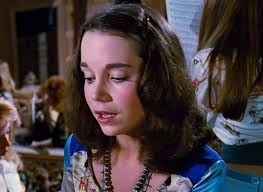 Jessica Harper is Phoenix, a beautiful talented songstress.
Jessica Harper is Phoenix, a beautiful talented songstress.  Gerrit Graham is Beef, the hilarious scene stealing heavy metal rock star whose tough on-stage persona is the complete opposite of his off-stage proclivities.
Gerrit Graham is Beef, the hilarious scene stealing heavy metal rock star whose tough on-stage persona is the complete opposite of his off-stage proclivities.
The music, all by Williams, is a series of diverse genre, very catchy songs which fit into the venue of this rock-scene story as rehearsals for, and stage event performances of, Swan’s new hit musical.  Everything was written by Paul Williams. The story is, at turns: tragic, funny, creepy, romantic, grotesque, and philosophical, occasionally all at once – walking a VERY thin tightrope between slapstick comedy and Gothic drama.
Everything was written by Paul Williams. The story is, at turns: tragic, funny, creepy, romantic, grotesque, and philosophical, occasionally all at once – walking a VERY thin tightrope between slapstick comedy and Gothic drama.
The Beautician and the Beast (1997)
 Combine The Odd Couple, Beauty and the Beast, The King and I, and The Sound of Music (without – uh – music), make it a comedy and you have this delightful, funny, charming and (mostly) family friendly movie.
Combine The Odd Couple, Beauty and the Beast, The King and I, and The Sound of Music (without – uh – music), make it a comedy and you have this delightful, funny, charming and (mostly) family friendly movie. 
 Fran Drescher is Joy Miller, a hair dresser who, mistaken for a science teacher, is hired to be the nanny and tutor to the children of President Boris Pochenko, an Eastern European dictator (Timothy Dalton).
Fran Drescher is Joy Miller, a hair dresser who, mistaken for a science teacher, is hired to be the nanny and tutor to the children of President Boris Pochenko, an Eastern European dictator (Timothy Dalton).  The yin and yang of the New York comedienne Drescher with the classically trained Shakespearean Dalton blend with adorable chemistry in a perfect example of that old saw about opposites attracting.
The yin and yang of the New York comedienne Drescher with the classically trained Shakespearean Dalton blend with adorable chemistry in a perfect example of that old saw about opposites attracting.
So there’s my list for this year: a sci-fi, a twist, a rock opera, and a rom-com. But no matter the movie you pick, remember to watch it with someone you love.
MY OSCAR PICKS FOR 2020
AUDIO PODCAST OPTION OF: MY OSCAR PICKS FOR 2020
PART ONE
PART TWO
Well it’s that time again – tucked right between Groundhog Day and Valentine’s Day – to hand out the Oscars! Some think of it as a time to recognize outstanding achievement in the art of cinema. Louis B. Meyer referred to it as a trade show. George C. Scott called it a meat market and refused to participate. But, however you think of it, the winning of this award confers a great deal of attention and is a heck of a resume enhancer for those on both sides of the camera.
Let’s start by identifying the categories. You can get your own ballot HERE.
Originally called the Academy Award of Merit, it was the brain child of Louis B. Meyer who thought up the idea in 1929, allegedly to forestall unionization, asserting: “I found that the best way to handle [filmmakers] was to hang medals all over them.”
Sculpted by George Stanley, a native of Iota, Louisiana (significant to me, personally, as that is my home state), Stanley followed the design by Cedric Gibbons, the Art Director for such classics as The Wizard of Oz, Gaslight, and Brigadoon.
The far more famous moniker for the Academy Award of Merit is, of course, Oscar – supposedly dubbed by a passing secretary who was alleged to have quipped: “That looks like my Uncle Oscar!”
The most anticipated awards are for best: Picture, Lead Actor and Actress, Supporting Actor and Actress, Director, Screenplay and Song. But there are, all told, 24 standard categories plus the periodic endowment of a Life Time Achievement award and a variety of lesser known technical and merit based awards.
I’m only going to cover the areas on which I feel comfortable expositing – acting, directing, cinematography (with some assistance from my excellent photographer husband), writing, and music.
Below I offer some rules of thumb.
ACTING
Do you get to know the character? I think a good rule of thumb in evaluating acting is to ask yourself after having seen the performance – do you know this character? Has the performer put so much nuance and exposition into his filmatic creation that you could take a good guess as to how they might react in any given situation? Now limitations here are not always the actor’s fault. There just might not be enough pallet in an individual film to paint enough of a spectrum to allow this kind of extrapolation. But some actors can, with just a glance, body language, change of inflection or what they DON’T do or say, get into the skin of their character.
This becomes evident when noting there have been awards handed out for the smallest of screen time characters: such as Beatrice Straight’s 5 minutes and 2 second supporting actress performance in Network, or for Ingrid Bergman’s 5 minute continuous shot in Murder on the Orient Express.
MUSIC AND CINEMATOGRAPHY
Does it serve the film? Though, obviously, two different categories, music and cinematography have the same job – do they both “act” as performers in their own right AND blend in, in such a way that unless you are listening or watching for it, you don’t notice? Examples are the way Stanley Kubrick recreated the first significantly realistic cinematic experience of being in space in 2001: A Space Odyssey – astonishingly accurate for its time, especially given the limited technology with which to innovate. Watching it now the visuals seem natural – of COURSE this is what it would be like – the weightlessness of the floating pen, following Dave Bowman as he runs in the circular habitat. But if you step back and realize Kubrick did it without actually going into space with 60 year old technology you realize what a stand out performance the cinematography really is. Or how the music in Casablanca fits, enhances and captures the mood and time of the era and place of Vichy France during World War II, as well as reflects the personalities of the outstanding cast. The music buoys up the performances of Bergman and Bogey seamlessly, yet later you realize how enchantingly memorable the themes are.
WRITING
Was it done with a conscience? Is the story created within a coherent Universe which, depending upon the rules IN that Universe are: reasonably without holes, with believable characters, structured by a convincing plot and with a worthy theme that made the time you spent watching a good investment?
DIRECTING and BEST PICTURE
Is it timeless? Does the movie come back to you again and again, revealing layers you never saw the first or second or tenth time you saw it? Like: It’s a Wonderful Life, Groundhog Day, or Branagh’s Hamlet.
So armed with these admittedly somewhat shallow explanations for what is, fundamentally, an intellectually driven visceral response to the films at hand, I give you:
MY PICKS FOR THE OSCARS 2020
Of the ones I pick, I’ll do them in the order the Academy more or less USUALLY presents them. In full disclosure, I have only seen ALMOST all of the movies in play. I promise not to declare a vote for anyone/thing I haven’t seen. I also plan to see all the ones in the categories for which I’m voting – and if that causes a later change in vote I’ll do an update.
BEST SUPPORTING ACTOR
 Tom Hanks in A Beautiful Day in the Neighborhood – Hands down the most incredible performance of 2019 (See my review HERE) Hanks WAS Mr. Rogers. Every subtle vocal and physical mannerism, the kindness, the deeply spiritual charisma of Evangelical belief that was Fred Rogers, is all on gentle display with Hanks. In this movie I got to know Rogers as though he HAD been my neighbor.
Tom Hanks in A Beautiful Day in the Neighborhood – Hands down the most incredible performance of 2019 (See my review HERE) Hanks WAS Mr. Rogers. Every subtle vocal and physical mannerism, the kindness, the deeply spiritual charisma of Evangelical belief that was Fred Rogers, is all on gentle display with Hanks. In this movie I got to know Rogers as though he HAD been my neighbor.
BEST SUPPORTING ACTRESS
There are some terrific performances up for nomination this year. But my nod would have to go to  Scarlett Johansson as Rose in Jojo Rabbit. Her presentation of a single mother leading a double life in the heart of Nazi Germany gives us a view of this woman in every possible light. She is shouldering the impossible task of protecting her son and trying to maintain the facade of a normal life while her country is under the thumb of psychopaths and soulless serial killers, all while harboring a heroic secret which could get them all brutally killed. We see the struggle in her eyes while admiring the courageously thrown up jaunty attitude with which she faces the world. Johansson reveals the beautiful soul of this woman all while operating within the confines of a supporting role.
Scarlett Johansson as Rose in Jojo Rabbit. Her presentation of a single mother leading a double life in the heart of Nazi Germany gives us a view of this woman in every possible light. She is shouldering the impossible task of protecting her son and trying to maintain the facade of a normal life while her country is under the thumb of psychopaths and soulless serial killers, all while harboring a heroic secret which could get them all brutally killed. We see the struggle in her eyes while admiring the courageously thrown up jaunty attitude with which she faces the world. Johansson reveals the beautiful soul of this woman all while operating within the confines of a supporting role.
BEST ANIMATED FEATURE


 Klaus (See my review HERE) Clever story, engaging and personable characters, delightful animation, unique take on an old traditional tale, excellent vocal performances, and a richly worthwhile theme make this my absolute favorite for this category.
Klaus (See my review HERE) Clever story, engaging and personable characters, delightful animation, unique take on an old traditional tale, excellent vocal performances, and a richly worthwhile theme make this my absolute favorite for this category.
BEST ADAPTED SCREENPLAY
 Jojo Rabbit is one of the oddest films I have ever seen. Without diverting into “Springtime For Hitler” territory, it shows Nazi Germany near the end of the war through the eyes of a pre-adolescent boy forced into the Hitler Youth. We see through his naive eyes as he concocts an initially Tigger-like jovial bouncy Hitler (performed with bizarrely adorable exuberance by the writer/director Taika Waititi, whose unusual sense of humor reinvigorated the Thor franchise with much needed humor). We understand the child-innocent well meaning enthusiasm toward the Hitler Youth in general and Nazi Germany in general, the way children today might go to summer camp. He simply did not understand what was really going on. There is an unexpected lightness to Waititi’s script, based on Christine Leunen’s book Caging Skies, which darkens with the characters the more Jojo matures and comprehends. Jojo Rabbit is a profoundly moving piece of work which is both hard to watch and endearing to embrace as it demonstrates how the smallest of lights can illuminate so much even in the darkest of places. Waititi creates a world wherein decent credible people are trapped in the insanity of the Nazi death culture, who fight it with the strength of their courage and the beauty of genuine other-centered love.
Jojo Rabbit is one of the oddest films I have ever seen. Without diverting into “Springtime For Hitler” territory, it shows Nazi Germany near the end of the war through the eyes of a pre-adolescent boy forced into the Hitler Youth. We see through his naive eyes as he concocts an initially Tigger-like jovial bouncy Hitler (performed with bizarrely adorable exuberance by the writer/director Taika Waititi, whose unusual sense of humor reinvigorated the Thor franchise with much needed humor). We understand the child-innocent well meaning enthusiasm toward the Hitler Youth in general and Nazi Germany in general, the way children today might go to summer camp. He simply did not understand what was really going on. There is an unexpected lightness to Waititi’s script, based on Christine Leunen’s book Caging Skies, which darkens with the characters the more Jojo matures and comprehends. Jojo Rabbit is a profoundly moving piece of work which is both hard to watch and endearing to embrace as it demonstrates how the smallest of lights can illuminate so much even in the darkest of places. Waititi creates a world wherein decent credible people are trapped in the insanity of the Nazi death culture, who fight it with the strength of their courage and the beauty of genuine other-centered love.
BEST ORIGINAL SCREENPLAY
I struggled a bit with this one because all of the entries are outstanding. Knives Out (SEE REVIEW HERE) is a funny and clever anti-mystery. 1917 captures the World War I era with a terrifying beauty. Once Upon a Time in Hollywood is a refreshingly unique take on such a horrific moment in history. OK Parasite is terrible. Had no trouble bumping that one.
 But Marriage Story is the stand out winner – a brilliant, insightful, gut wrenching take of a marriage as it is torn apart piece by piece from the inside out in a way only Hannibal Lector could approve. Two perfectly nice, compatible people decide they have different goals and instead of DECIDING, against any other consideration, to work it out for the sake of their vows, their child, and their own sanity – they consult …. divorce attorneys. This is, of course, a bit like trying to wash a bloody wound in a river full of piranhas and expecting to get something back other than a stump. Written by Noah Baumbach, the gifted director/writer with unfortunate first hand experience of the subject, it is the most tragic love story I have ever seen. It is also one of the single most convincing expositions against seeking a divorce for anything other than abuse or something life threatening.
But Marriage Story is the stand out winner – a brilliant, insightful, gut wrenching take of a marriage as it is torn apart piece by piece from the inside out in a way only Hannibal Lector could approve. Two perfectly nice, compatible people decide they have different goals and instead of DECIDING, against any other consideration, to work it out for the sake of their vows, their child, and their own sanity – they consult …. divorce attorneys. This is, of course, a bit like trying to wash a bloody wound in a river full of piranhas and expecting to get something back other than a stump. Written by Noah Baumbach, the gifted director/writer with unfortunate first hand experience of the subject, it is the most tragic love story I have ever seen. It is also one of the single most convincing expositions against seeking a divorce for anything other than abuse or something life threatening.
And yet the tale as written is also warm, funny and paints even the attorneys in ways which allow the audience to empathize with every character to a certain degree. Marriage Story is gifted writing with a conscience, at its best.
CINEMATOGRAPHY
 1917. Honestly all the other contenders, as good as they are, should graciously bow out. There is no competing with this astonishing visual accomplishment, whereby we seamlessly follow soldiers for two edge-of-your-seat hours, during a desperately perilous mission, in what appears to be one uncut shot, through the Hellscape that was the front line in France during World War I.
1917. Honestly all the other contenders, as good as they are, should graciously bow out. There is no competing with this astonishing visual accomplishment, whereby we seamlessly follow soldiers for two edge-of-your-seat hours, during a desperately perilous mission, in what appears to be one uncut shot, through the Hellscape that was the front line in France during World War I.
BEST ORIGINAL SCORE
 Joker. (SEE REVIEW HERE). While I truly enjoyed all of the music from all of the movies (even from Little Women, which story I thought awful {SEE REVIEW HERE}), all but one painted “simple” enhancing atmosphere. All but one film had soundtracks which were: original, inventive, witty, romantic, tense, frightening and/or just lovely musical tapestries. But only one – only Joker – created an entirely different character just with sound. The Icelandic composer, Hildur Guðnadóttir wove, from the ephemeral air, music that did not just set a mood but companioned Arthur Fleck, giving tangible auditory representation to his descent into utter madness. While Phoenix’ performance was riveting, the presence of his accompanying soundtrack achieved a visceral connection with the audience which he could not have created from mere visuals, no matter how brilliantly wrought.
Joker. (SEE REVIEW HERE). While I truly enjoyed all of the music from all of the movies (even from Little Women, which story I thought awful {SEE REVIEW HERE}), all but one painted “simple” enhancing atmosphere. All but one film had soundtracks which were: original, inventive, witty, romantic, tense, frightening and/or just lovely musical tapestries. But only one – only Joker – created an entirely different character just with sound. The Icelandic composer, Hildur Guðnadóttir wove, from the ephemeral air, music that did not just set a mood but companioned Arthur Fleck, giving tangible auditory representation to his descent into utter madness. While Phoenix’ performance was riveting, the presence of his accompanying soundtrack achieved a visceral connection with the audience which he could not have created from mere visuals, no matter how brilliantly wrought.
BEST ORIGINAL SONG
 I am not a big fan of the Frozen movies but I really think Kristen-Andersen Lopez and Robert Lopez’ “Into the Unknown” deserves special commendation. The haunting melody is far more complex than you might expect, especially for an animated feature. “Into the Unknown” is a gigue in 12/8 time (a very fast waltz time likely undanceable) in C#. While, unless you have absolute pitch or a music degree, the relevance of that won’t be obvious, suffice it to say it is a complex key signature using a TON of sharps. Choices like these are made by composers for almost subliminal reasons – to give a specific flavor and feel to music using a particular keyboard range, for example. There is also a psychological aspect to using all those sharps. As a “sharp” is a half step UP from a “normal” note, it LOOKS, on sheet music like it rises, so lends itself to a feel of spritely upbeatness. Since anything written in the key of C# would be bathed in a “sea” of sharps (“see” what I did there – sorry couldn’t help myself), this visual helps facilitate the intense forward moving personality of the song.
I am not a big fan of the Frozen movies but I really think Kristen-Andersen Lopez and Robert Lopez’ “Into the Unknown” deserves special commendation. The haunting melody is far more complex than you might expect, especially for an animated feature. “Into the Unknown” is a gigue in 12/8 time (a very fast waltz time likely undanceable) in C#. While, unless you have absolute pitch or a music degree, the relevance of that won’t be obvious, suffice it to say it is a complex key signature using a TON of sharps. Choices like these are made by composers for almost subliminal reasons – to give a specific flavor and feel to music using a particular keyboard range, for example. There is also a psychological aspect to using all those sharps. As a “sharp” is a half step UP from a “normal” note, it LOOKS, on sheet music like it rises, so lends itself to a feel of spritely upbeatness. Since anything written in the key of C# would be bathed in a “sea” of sharps (“see” what I did there – sorry couldn’t help myself), this visual helps facilitate the intense forward moving personality of the song.
This fascinating piece is sung with an irresistible rhythm and mystery which not only gives an arc to Elsa’s character, admitting her previous failures, but is written in a way that, performed independently of the movie, could be interpreted in a variety of ways. It could be someone holding back from an enticement to temptation or conversely, being compelled to accept a challenge. It could be someone trying to talk themselves either into or out of something and that is part of the song’s charm and fun. It has the malleability to be many things to many people and is enticing for that. In addition Idina Menzel’s performance is incredible. Ranging from hesitant ghostly whisper to wall rattling boldness, her portrayal is almost operatic in its execution. Not to mention it’s darned catchy.
BEST DIRECTOR
 Has to be Sam Mendes for the sheer determination and vision he brought to bear in pulling 1917 into life. Aside from the experimental Russian Ark (which really WAS shot in ONE – one hour and 39 minute take – SEE REVIEW HERE) and Hitchcock’s faux “one shot” Rope, no other film has quite captured the intensity of the one take film as Mendes has, OR accomplished it with such appropriate purpose. Russian Ark was almost a stunt. Hitchcock used the technique as just another arrow in his quiver of quirky ways to create suspense. But Mendes’ worthy intent was to provide the viewer with a sense of camaraderie with these soldiers – not just to sympathize with them but to EMPATHIZE – To honor the memory of these brave servicemen by recreating the experience, walking with these men, almost as though in accompanying boots. 1917 bears the intensity and immersion of the 27 minute long landing scene in Saving Private Ryan, then carries it for another NINETY-TWO additional minutes, maintaining the appearance of a single shot, all while sustaining an entertainment value that will keep you glued to the screen for two incredible hours.
Has to be Sam Mendes for the sheer determination and vision he brought to bear in pulling 1917 into life. Aside from the experimental Russian Ark (which really WAS shot in ONE – one hour and 39 minute take – SEE REVIEW HERE) and Hitchcock’s faux “one shot” Rope, no other film has quite captured the intensity of the one take film as Mendes has, OR accomplished it with such appropriate purpose. Russian Ark was almost a stunt. Hitchcock used the technique as just another arrow in his quiver of quirky ways to create suspense. But Mendes’ worthy intent was to provide the viewer with a sense of camaraderie with these soldiers – not just to sympathize with them but to EMPATHIZE – To honor the memory of these brave servicemen by recreating the experience, walking with these men, almost as though in accompanying boots. 1917 bears the intensity and immersion of the 27 minute long landing scene in Saving Private Ryan, then carries it for another NINETY-TWO additional minutes, maintaining the appearance of a single shot, all while sustaining an entertainment value that will keep you glued to the screen for two incredible hours.
BEST LEADING ACTOR
This is a toughie. All the men in this category did a superb job. Banderas was as detailed and delicately understated in Pain and Glory as Joaquin Phoenix was wildly exubertant in Joker. Di Caprio was surprisingly delightful and funny as the washed up actor in Once Upon a Time in Hollywood. Adam Driver, especially to anyone mostly familiar with him as Star Wars’ Kylo Ren baddie, was heartbreakingly empathetical as the shut out husband and father in Marriage Story.
 But my vote has to be with the incomparable Jonathan Pryce. Pryce let us in to the mind, heart and soul of Pope Francis, revealing in just a gesture or a double take, a hesitation in his voice or a quick Mona Lisa grin, the deep history of a man who had seen too much with a full heart and an aching to bring the love of Christ to a broken world. Watching Pryce we begin to understand the flawed, sometimes troubled, Cardinal Bergoglio who, by his own admission in this story, made grave, albeit well meaning, mistakes during his time as bishop in Argentina. We, the audience, can actually feel his humility and regret, as well as the hint of over confidence in his own opinions. We also get a glimpse into what compels the Pope who now occupies the Seat of Peter in a personal way rarely seen by outsiders, thanks to Mr. Pryce’s beautiful and respectful yet honest portrayal.
But my vote has to be with the incomparable Jonathan Pryce. Pryce let us in to the mind, heart and soul of Pope Francis, revealing in just a gesture or a double take, a hesitation in his voice or a quick Mona Lisa grin, the deep history of a man who had seen too much with a full heart and an aching to bring the love of Christ to a broken world. Watching Pryce we begin to understand the flawed, sometimes troubled, Cardinal Bergoglio who, by his own admission in this story, made grave, albeit well meaning, mistakes during his time as bishop in Argentina. We, the audience, can actually feel his humility and regret, as well as the hint of over confidence in his own opinions. We also get a glimpse into what compels the Pope who now occupies the Seat of Peter in a personal way rarely seen by outsiders, thanks to Mr. Pryce’s beautiful and respectful yet honest portrayal.
AS A SIDE NOTE – A WRITE-IN
BUT – according to my own parameters I would like to submit a write-in for at least a nomination. Given my rule of getting to know a character through the performance of an actor, I can think of no other cinematic creation we, as the viewing public have gotten to know better than this, my write-in. There has never been, and may never be again in cinematic history, a character quite this well fleshed out by a single actor over the length of time and movies involved here.
We watched the profound arc of an extreme narcissist who, through multiple traumas, sheer determination, strength of character, and support from friends and family, becomes the hero he incorrectly believes himself to initially be. Over the course of many trials and agonizing losses he finds: altruism, responsibility, an ability to genuinely love, and ultimately a willingness to sacrifice everything he has – wealth, brilliance, family, happiness, comfort, security, and ultimately his own life – to secure all those things for, not only his loved ones, but for humanity and generations he will never meet.
This character develops from puerile man-child to a worthy leader of heroes and yet never loses that certain spark of flawed playful arrogance which makes him easily relatable. It’s an incredible balancing act which this actor maintained throughout 11 years over the course of appearances in 10 out of 22 movies.
 I am, of course, referring to Robert Downey, Jr.’s Iron Man aka Tony Stark, in the Infinity Saga, which both began and ended with Tony’s declaration: “I am Iron Man.”
I am, of course, referring to Robert Downey, Jr.’s Iron Man aka Tony Stark, in the Infinity Saga, which both began and ended with Tony’s declaration: “I am Iron Man.”
Downey’s Stark’s legacy continues through flashbacks and archival footage in both Spiderman: Far From Home and the upcoming Black Widow. We knew this character inside out under every circumstance possible. For better or worse, like him or not, he became a very well known, unmistakable personality.
While the culmination of Stark’s arc was in 2019’s Avengers: Endgame, admittedly the entire journey did not all take place during the course of this one movie. BUT if fictional characters could get life time achievement awards, this would be the one to give it to. Furthermore, Mr. Downey shouldered the majority of this somewhat Herculean task. Not only did he maintain a constant personality for Tony but allowed it to grow and struggle and expand, yet never lost the essential core that made Stark a magnetic fan favorite.
Others have tried this stunt and failed: Schwartzenegger’s Terminator, Depp’s Captain Sparrow. But those died of stagnation, audience fatigue, and lost of enthusiasm. In contrast, Downey managed to make Tony Stark thrive and mature and flourish with each appearance. It was an astonishing feat of creativity and it is a shame that it was not and likely never will be officially acknowledge by his peers. But the fans will remember and I suspect that is more than enough —- that and the gazillion dollars Downy earned playing Stark. As my Dad used to say: “I’m sure he’s crying all the way to the bank.” LOL
BEST LEADING ACTRESS
 I admired all the performances I saw in this category. But the most outstanding one was Renee Zellweger’s Judy. Her complete transformation into Judy Garland, in the iconic star’s last, waning, rather pathetic months, both showed the open raw wound she had become, as well as retained a glimmer of the child star with whom we all fell in love while watching Wizard of Oz. In addition, Zellweger’s renditions of the famous songs by Ms. Garland were incredible. She reminded me both of Gary Oldman’s astonishing turn as Churchill in Darkest Hour {SEE REVIEW HERE}and Malek’s heartbreaking Freddie Mercury in Bohemian Rhapsody {SEE REVIEW HERE}. This masterful accomplishment was all the more amazing given the poor quality of the film, Judy, in general {SEE MY REVIEW HERE}. But Zellweger’s performance was the stand out gem in the otherwise tattered coat that was Judy.
I admired all the performances I saw in this category. But the most outstanding one was Renee Zellweger’s Judy. Her complete transformation into Judy Garland, in the iconic star’s last, waning, rather pathetic months, both showed the open raw wound she had become, as well as retained a glimmer of the child star with whom we all fell in love while watching Wizard of Oz. In addition, Zellweger’s renditions of the famous songs by Ms. Garland were incredible. She reminded me both of Gary Oldman’s astonishing turn as Churchill in Darkest Hour {SEE REVIEW HERE}and Malek’s heartbreaking Freddie Mercury in Bohemian Rhapsody {SEE REVIEW HERE}. This masterful accomplishment was all the more amazing given the poor quality of the film, Judy, in general {SEE MY REVIEW HERE}. But Zellweger’s performance was the stand out gem in the otherwise tattered coat that was Judy.
BEST PICTURE
 Marriage Story – for all the reasons I chose it for Best Original Screenplay. This is a movie which will stick with you, help inform your decisions if you let it, and be worth sharing with those who desperately need it. It will charm you, break your heart and make you a wiser person for having seen it – IF you take the lessons it has to offer to heart.
Marriage Story – for all the reasons I chose it for Best Original Screenplay. This is a movie which will stick with you, help inform your decisions if you let it, and be worth sharing with those who desperately need it. It will charm you, break your heart and make you a wiser person for having seen it – IF you take the lessons it has to offer to heart.
SO THAT’S IT FOR NOW!!!!
Good luck to one and all! And may the best actor, actress, director, movie, screenplay, cinematographer, song, and music —- WIN!
YET MORE SNOW QUEEN PHOTOS – LAKE CHARLES LITTLE THEATRE
EVEN MORE PHOTOS FROM SNOW QUEEN – LAKE CHARLES LITTLE THEATRE
MORE PHOTOS FROM SNOW QUEEN AT LAKE CHARLES LITTLE THEATRE
SNOW QUEEN AT LAKE CHARLES LITTLE THEATRE – FEBRUARY 7 – 23, 2020
SHORT TAKE:
Delightful musical retelling of Hans Christian Andersen’s fairy tale The Snow Queen.
WHO SHOULD GO:
Early to mid teens and up. Though nothing inappropriate for the younger set, at two hours and with the somewhat erudite themes, story structure, and production, the littler kids might get restless.
LONG TAKE:
The Snow Queen has been produced under many guises: story, play, movie, opera, anime, science fiction novel, video game, radio play, ballet, and several musicals from a multiplicity of countries. This pop/rock musical version, directed by the wonderful and warm  Bacot Wright, and aided by her heroic battery supplying husband Greg, and exhausted assistant director
Bacot Wright, and aided by her heroic battery supplying husband Greg, and exhausted assistant director  Dan Sadler, without whom the sky might literally fall from the ceiling, is being performed at Lake Charles Little Theatre from February 7 through February 23, 2020, (tickets HERE). This Snow Queen is from a book/stageplay script adaptation by Haddoon Kime with music by Kime, Kirsten Brandt & Rick Lombardo.
Dan Sadler, without whom the sky might literally fall from the ceiling, is being performed at Lake Charles Little Theatre from February 7 through February 23, 2020, (tickets HERE). This Snow Queen is from a book/stageplay script adaptation by Haddoon Kime with music by Kime, Kirsten Brandt & Rick Lombardo.
Based on the Hans Christian Andersen’s classic The Snow Queen, the tale is spun about a young heroine, Gerda, who endures a long perilous journey to free her neighbor and playmate, Kai, from the enticements of The Snow Queen and the evil spell of the Devil himself.
Many have theorized that The Snow Queen is the story upon which Frozen was based….very loosely………very VERY loosely – though the one in Frozen who needs rescuing is combined with the villain character from Snow Queen, and the one in need of “rescuing” in Frozen is a woman instead of a boy, and the main characters in Frozen are estranged sisters instead of playmates…and the adventures are almost unrecognizable from the source story…and the sister isn’t exactly enchanted but is mostly just having an identity crisis…but if you squint REALLY hard…..
 Now, there is a definite echo in the character of the Snow Queen from the White Witch in the Chronicles of Narnia, as both live and thrive in cold and snow, call up enchantments, freeze people and their souls, and seduce their victims with sweets – the Snow Queen with kisses which give a kind of ecstasy, the White Witch with Turkish Delights.
Now, there is a definite echo in the character of the Snow Queen from the White Witch in the Chronicles of Narnia, as both live and thrive in cold and snow, call up enchantments, freeze people and their souls, and seduce their victims with sweets – the Snow Queen with kisses which give a kind of ecstasy, the White Witch with Turkish Delights.
The Little Theatre troupe embraced the challenge of music which is often dissonant and contrapunctal. From the rich harmonies of the ensembles to the counter point duets and the strong solos, all the singers bring great beauty to a variety of styles employed to enhance the mood of the scenes: from  Lily Brady’s hip hop Robber Girl’s “I Want That”, to
Lily Brady’s hip hop Robber Girl’s “I Want That”, to  Heather Foreman’s Broadway perk in the Princess’ “Never Give Up”,
Heather Foreman’s Broadway perk in the Princess’ “Never Give Up”,  Louis Barrilleaux as Reindeer and Hunter Becton’s Gerda operatic style duet “Aurora”,
Louis Barrilleaux as Reindeer and Hunter Becton’s Gerda operatic style duet “Aurora”,  Cole Becton’s Kai singing the “Equations” lament,
Cole Becton’s Kai singing the “Equations” lament, 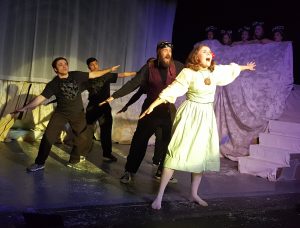 ensembles like “Flying”,
ensembles like “Flying”,  Taylor Novak-Tyler’s Snow Queen’s Phantom-like aria “You Are Mine” – all are performed with the requisite vocal precision and confidence essential to these demanding songs.
Taylor Novak-Tyler’s Snow Queen’s Phantom-like aria “You Are Mine” – all are performed with the requisite vocal precision and confidence essential to these demanding songs.
The sets are cleverly minimalist – evoking the diverse ranges of: castle, river, cottage, flying in the sky – mostly just with light and sound and singing against a bold multilevel backdrop.
Almost all the cast members do multi duty.  Katie Becton, in real life the mother of Hunter and Cole plays both the grandmother of Gerda and Kai as well as the Robber Mom. Louis is at turns a Prince, a Troll and a Crow as well as the aforementioned Reindeer. Heather is Princess, North Witch and Garden Witch. Lily is the Robber Girl and a talking/singing Rose.
Katie Becton, in real life the mother of Hunter and Cole plays both the grandmother of Gerda and Kai as well as the Robber Mom. Louis is at turns a Prince, a Troll and a Crow as well as the aforementioned Reindeer. Heather is Princess, North Witch and Garden Witch. Lily is the Robber Girl and a talking/singing Rose.  Timothy Smith is creepy as a Troll King and endearing as the aging but courageous British Old Crow.
Timothy Smith is creepy as a Troll King and endearing as the aging but courageous British Old Crow.  Cagle Kaough “flys” between Lady Crow and Flower.
Cagle Kaough “flys” between Lady Crow and Flower.  Everly Spears is adorable as a chatty Narcissus and pigeon with some well timed coos.
Everly Spears is adorable as a chatty Narcissus and pigeon with some well timed coos.  Crista Corbello is charming as flower and pigeon.
Crista Corbello is charming as flower and pigeon.  Supratik Regmi and
Supratik Regmi and  Antonio Dre do triple duty as Trolls, Robbers and Crows.
Antonio Dre do triple duty as Trolls, Robbers and Crows.
This musical covers a gamut – insightful philosophy, musical fantasy, adventure and all with a sense of humor, especially notable in the scene stealing  garden flowers and
garden flowers and  Pigeons.
Pigeons.
Some say the story is an allegory for a girl’s maturation as she moves from the clingy shelter of her mother (the garden), to the temptations of pubescence (the robber’s den), the winter of old age (the North Witch’ hut) and even death (the ice castle). Others that it is reminiscent of Bunyan’s Pilgrim’s Progress as our protagonist must over come many and varied obstacles, climbing ever upward, to save a soul – in the case of The Snow Queen, not her own but that of her friend.  It could also be seen as simply the imaginings of two children who, having heard of a darkly magical fairy tale just at bed time, dream themselves into it as the main characters in all its vivid detail. I think it is all that and more, a testament to the story both sparse and multi-leveled that each audience member can take away something different and personal, depending on their individual perspective and stage of life.
It could also be seen as simply the imaginings of two children who, having heard of a darkly magical fairy tale just at bed time, dream themselves into it as the main characters in all its vivid detail. I think it is all that and more, a testament to the story both sparse and multi-leveled that each audience member can take away something different and personal, depending on their individual perspective and stage of life.
So go see this delightful, funny, enchanting musical tale of fairy tale heroics, adventurous self-sacrifice, and introspective wisdom – a library all in one play – at Lake Charles Little Theatre – tickets HERE.
AND EVEN MORE DISASTER PHOTOS
Check the DISASTER review for additional photos as well!
EVEN MORE DISASTER PHOTOS
Check the DISASTER review for additional photos as well!











